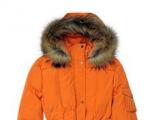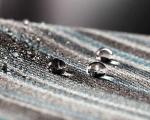Cartoon characters made of paper. DIY paper fairy tale
Fairy tale characters made of paper with their own hands
Instructions for making paper toys
The theme of the master class: "Game technologies in visual activity."
Master class on needlework (work with paper).
The name of the master class is "A fairy tale with your own hands"
The master class is designed for preschool and primary school age.
The purpose of the master class:
Task: development of creative abilities and motivation for knowledge.
"Game technologies in visual activity"Master class
Master class topic:"Game technologies in visual activity".
The purpose of the master class: show the role of play in the development of the creative potential of children.
Materials: paper, glue, scissors, pencils, templates.


Gaming technologies are of particular importance in my classes. Game technologies are a didactic system of entertaining, theatrical, business, role-playing games, simulation exercises, game design, solving practical situations and problems. Game technologies are widely used in preschool and primary school age, as the game is the leading activity in this period of a child's life. The child develops a creative imagination, an orientation in his own feelings arises and the skills of their cultural expression are formed, which allows the child to be included in collective activities and communication.
It is known that a small child freely reincarnates, enters the game perfectly, quickly gets carried away by an invented image or action, and easily embodies it in a pictorial game-action.
The use of gaming technologies for the development of the creative potential of children of preschool and primary school age allows for continuity in the use of a variety of teaching methods.
Practical part
Here are the heroes of the Russian folk tale "Turnip" that the children made.

We will create the heroes of this fairy tale.
This work is carried out in several stages:
1. We take the part template and transfer its contours to paper.

2. With a simple pencil, draw our patterns on the details.

3. Coloring in color.

4. Cutting out details.

5. Gluing heroes from finished parts.

Often, during this work, students try to create their own unique portraits of fairy-tale characters or favorite animals, supplement them with their imagination.
I believe that such activities create conditions for the disclosure of the creative potential of children. We do not create works of art. Our main task is the development of creative abilities and motivation for learning.
And we will unite all these heroes as in the fairy tale "Turnip".
(possible with imitation of the movements of the heroes of a fairy tale)
turnip
(Russian folktale)
Grandfather planted a turnip (grandfather comes out).
A big turnip has grown - a big one (a turnip comes out).
The grandfather began to pull the turnip, pulls - pulls, he cannot pull it out.
The grandfather called the grandmother (the grandmother comes out).
Grandmother for grandfather, grandfather for turnip -
The grandmother called her granddaughter (the granddaughter comes out).
Granddaughter for grandmother
grandma for grandpa
Grandfather for a turnip -
Pull - pull, pull can not.
The granddaughter called Zhuchka (the bug comes out).
Bug for granddaughter
Granddaughter for grandmother
grandma for grandpa
Grandfather for a turnip -
Pull - pull, pull can not.
Bug called the cat (the cat comes out).
Cat for a bug
Bug for granddaughter
Granddaughter for grandmother
grandma for grandpa
Grandfather for a turnip -
Pull - pull, pull can not.
The cat called the mouse (the mouse comes out).
Mouse for a cat
Cat for a bug
Bug for granddaughter
Granddaughter for grandmother
grandma for grandpa
Grandfather for a turnip -
They pull - they pull and everyone is a friendly family, helping each other and supporting each other - they grew up and pulled out this turnip.
And we, together helping each other, created these fairy-tale heroes.
Such mini performances in children cause great delight and here they show a lot of imagination. Folk tales have a huge educational potential, which is important in shaping the personality of a child.
With such productions, we go to kindergarten, hold exhibitions. Often we give children's works as souvenirs to kindergarten, war veterans and honored people of the village.
Based on these templates, you can create heroes of other fairy tales or fairy tales that you have invented.
DIY crafts are the best way to develop a child's creativity, imagination and fantasy. Therefore, if you have free time and want to spend it with your child, get creative. Probably, every child has a favorite fairy-tale hero and for him this will be the best hand-made craft.
Crafts from plasticine on the theme "Fairy-tale heroes"
Plasticine is the most convenient and lightest material to work with. Therefore, making a craft of your favorite fairy-tale hero out of it will not be difficult. We offer you to make the hero of many fairy tales - the Serpent Gorynych:
Crafts on the theme "Heroes of fairy tales" - do-it-yourself gingerbread man
For work we need:
- balloon;
- stationery glue;
- PVA glue;
- threads;
- colored paper;
- scissors.
Progress:

Crafts on the theme "Cartoon Heroes" - corrugated cardboard cheburashka
To create a cheburashka, we need yellow and brown corrugated cardboard, hot glue and PVA glue.
Both the body and the head consist of two parts - front and back. We twist the two front parts first from yellow cardboard and on top of several rows of brown. The two backs are completely made of brown cardboard. Details need to be squeezed out a little and glued on the back with hot glue.

Glue two parts of the head and two parts of the body together, gluing a strip of paper in the middle.

We twist the legs from brown cardboard, shaped as in the photo. In the same way we make handles. Each part must be squeezed out and glued.
We twist the ears in the same way as the head and torso. Squeeze a little and glue on the convex side.
Heroes, scenery and crafts for playing paper adventures from the cartoon "Papers".
Paper adventures in the cartoon "Papers"
At the very beginning of November, on the Karusel TV channel, my daughter saw several episodes of the new (2015) educational multi-part cartoon "Papers" by the Parovoz studio, directed by Alexei Mironov.
The main characters of the story - the intelligent, aristocratic and melancholic elk Aristotle and the energetic woodpecker Tyuk-Tyuk - live in a paper world. Everything around them is paper (most of the decorations, including the characters themselves, are made of corrugated cardboard). Therefore, in their world, the words "paper" and "good" are synonymous.
Do you know who voices the cartoon "Papers"? He is voiced by Andrey Rozhkov from the Ural Pelmeni KVN team.
Each episode begins by showing how to make Aristotle's elk and addressing the audience:
Dear friends! Put away your gadgets, turn away from your computers, get your scissors, glue and paper ready. Because paper adventures begin!
A distinctive feature and advantage of these cartoons is that they:
- entertaining, instructive and educational
- short, one series lasts about 5 minutes - the load on the eyes of children will not be excessive
- each series contains a master class on making paper crafts related to the theme of this series, and this lesson develops fine motor skills of children, contributes to their general and creative development
- very inspiring
My daughter and I love paper crafts, cartoons too, so my daughter wanted to make herself the same paper world. And she and I made everything necessary out of paper and cardboard so that you can play with the characters of this cartoon based on its motives or come up with your own stories.
How to make the characters of the cartoon "Paper Papers": Aristotle's moose, woodpecker Tuk-bale and hare-cat.
Elk Aristotle
How to make Aristotle's elk from the cartoon "Paper Papers" can be found at the beginning of each series - it shows what shape template to cut out of cardboard and how to bend it.
My daughter and I made the moose like this:

Woodpecker bale bale
How to make a woodpecker Tyuk-bale in the cartoon is not told, but this is not required - it is not difficult to do it at all. We did it like this:
- Cut out a rectangle from double-sided colored paper of bright green color.
- Small rectangles were cut from the side of each corner so that a cross-shaped figure remained.
- Triangular incisions were made on the wings, head and tail.
- The eyes were glued - two white circles in the shape of a figure eight with black dots drawn with a felt-tip pen.
- With a clerical knife, I made a triangular incision - a beak (you can fold the figure in half and make an incision with scissors at an angle on the fold, and then straighten it).
- Glued on a red paper bow tie.

hare cat
How to make a hare that can turn into a cat, and vice versa, is described in the very first series of the cartoon. We made it according to this lesson (you can watch the video with the cartoon at the end of the article):
- The torso of a hare cat (a circle with two legs) was cut out of white paper.
- Incisions were made in the body with a clerical knife.
- They cut out a detail of the tail and ears, similar to the letter "h", and inserted this detail into the cuts on the body.
- Drawn a muzzle.
Now if you pull his ears up, he will turn into a hare. Pull down the tail - it will turn into a cat.

The figurines of the characters from the cartoon "Paper Papers" turned out to be miniature, so that it would be convenient to play with them and not have to make a huge house for them. In the photo they are next to a matchbox and a 15 ml bottle of "naphthyzinum" (nasal drops).

How to make a house for the characters of the cartoon "Paper Papers"
To make the basis of the house for the heroes of the cartoon "Paper Papers", you will need two identical rectangles from packing cardboard. You can cut out the edges of the cardboard in the shape of a tree and make a crown, but we have a simplified mini version of the house.
In one rectangle, an incision is made in the middle to the center from below, in the other - from above. And then the rectangles are inserted one into the other. This is convenient because the house after the game can be disassembled and then quickly and easily reassembled, so its storage does not require much space.

For wallpaper, scrapbooking paper and colored paper for children's creativity were used.
But with the interior and furniture, everything turned out to be not so simple: in different series in the same room there were models of grandfather clocks that differed from each other, which, moreover, ended up in different places in the room, curtains of different colors, different frames on the windows, different furniture, various paintings on the wall. So we went through several episodes looking for shots of the environment in the rooms and did the first thing that caught our eye.
Repeating stamps from our collection were used as paintings. The most striking were postage stamps from Israel (there are also stamps with different birds instead of a woodpecker).
Living room
A window is cut into the wall. The curtain, however, is not paper, because. paper would not withstand numerous openings and closings.

Grandfather clock, table and chairs made of thick cardboard packaging. The clock has a movable pendulum (mounted on a string). Teapot and cups made of thin cardboard.

Bale room
Wallpaper from a sheet of red colored paper from a set for children's creativity, white paper stars are glued on them, made. Mirror from a circle of thick foil glued to a circle of cardboard. A ring of wire, it is bent at the top with the letter "p", and its other end is inserted into the cardboard wall from above between the waves of corrugation. The locker, where the Bale-bale stores a lot of useful things, was made by my daughter from a tea box and pasted over with masking tape. Since this happened without my advice, it turned out not quite neatly.

Aristotle's room
I drew blanks for furniture, my daughter did assembly and painting under my guidance.

Well, how was it possible to do without Aristotle's favorite musical instrument? :) Tool made of cardboard, strings of thin sewing threads.

How to make other scenery from the cartoon "Paper Papers"
Our characters have not only a house - in some episodes they sailed on a boat, fished. Therefore, not far from the house they have a lake on which they sail in a boat.

A boat made of colored paper, a scheme for making such a boat is in the article.
My daughter made a fishing rod and fish out of cardboard.

And these are some items next to the matchbox for scale: a newspaper that the elk likes to read, fish, a napkin that usually lies on the bedside table in the elk's room (I cut out the napkin from thin paper), and a net.
In the cartoon, Aristotle threw the caught fish into the net, and the Bale-bale caught it. It turned out that such a net is simply necessary for my daughter to play. I had to do it: a tiny piece of tulle was stitched on the side and sewn between two layers of a cardboard round frame with a handle.
Well, how without New Year's decorations? Thanks to our daughter, they appeared in the house of our Aristotle and Tuk-Tuk 2 months before the New Year: this is a garland of the same stars with which the wallpaper in the Tuk-Tuk's room is pasted over, only multi-colored and threaded.

And finally, a photo of Aristotle with a newspaper (how could it be without it)?

List of the first 10 episodes and workshops for crafts of the cartoon "Papers"
- Hare or cat. Master class: a paper figure that can become either a hare or a cat, you just need to pull it up by the ears or down by the tail.
- Happy birthday, chicks! Master class: a phone made of thread and paper cups.
- Toy for the Zuid-West. Master class: windmill on a wooden stick.
- The best inventor Master class: parachute.
- On high. Master class: airplane (plane, origami).
- Bouquet for the queen. Master class: how to make a cartoon (I talked about this and, by the way, one of the examples was just a picture with a cat).
- Under the roof of the house. Master class: a house for a snail.
- The queen wants to go home. Master class: crown (modular origami)
- Picnic at lunchtime. Master class: a clock that does not show the present, but paper.
- An alien from Folgundia. Master class: a plate for space travel from paper plates and a cup.
Cartoon "Papers"
The first 10 episodes for review, there are much more episodes in total.
I suggest looking at other articles about crafts from the category "DIY games and toys" or all articles with the tag (the site has a lot of articles about crafts made using these materials).
© Julia Sherstyuk, https: // site
All the best! If the article was useful to you, please help the development of the site, share a link to it on social networks.
Placing site materials (images and text) on other resources without the written permission of the author is prohibited and punishable by law.
Tamara Nikolaevna Lazarchuk
Hello again dear colleagues. I continue to acquaint you with my master classes on making paper toys. Today I will show you how to make paper fairy tale characters for theatrical games.
These toys are easy to make and affordable for preschool children.
Target: make paper fairy-tale characters for theatrical games.
Tasks:
To consolidate the ability to work with paper, scissors;
Development of fine motor skills, constructive skills and abilities, creativity and imagination;
To form a friendly attitude towards each other, a desire to help;
Cultivate perseverance, accuracy, respect for work.
Step-by-step instruction.
For work, we need colored paper, a pencil, scissors, a ruler, glue, felt-tip pens or markers.
Take a sheet of colored paper (sheet size - A4) and divide it with a ruler into three equal parts. (For children, you can make such blanks in advance)

We make folds along the lines as shown in the photo.

Then we bend the strip folded in three in half.

Fold each free edge in half again.

Then, using felt-tip pens, draw the muzzle of a fairy-tale character. It can be done as an application. Glue the tongue inside. That's all. The toy is ready.

Putting it on your hand, you can play a variety of scenes from fairy tales and conduct dialogues.

If the kids don't like their character's mouth opening wide. I just had such a case, then you can glue the base of the mouth a little or fasten it with a paper clip.
I would be very glad if my experience in making and designing paper toys is useful to someone.
Related publications:
Didactic game on fiction Russian writers, books and book characters
"Paper Tulips". What to give mom on March 8? Let's make a present. Paper tulips. We will need: colored paper, scissors,.
I bring to your attention a master class I conducted for preschool teachers at the Fair of Pedagogical Ideas in the Center.
Master class for parents "Introduction to the technology" Fabulous labyrinths of the game by V. V. Voskobovich "" Moderator: (all participants stand in a circle). Dear parents, welcome to our exciting, entertaining master class today.
Master class on making an interactive theater "Fairy-tale Wisdom" Prepared by Vikarenko L. A. educator MADOU d / s No. 18 "Victoria".
Dear Colleagues! I present to you a master class on making two-story houses and characters from the musical repertoire for development.
Master class drawing on shaving foam "Fairy Flowers" Master class drawing on shaving foam "Fairy Flowers" Stakhanova Natalia.
All the children are well acquainted with and love the cartoon about the adventures of paper heroes - an elk named Aristotle and a woodpecker Tuk-tuk in a paper country. Funny stories are interspersed with interesting step-by-step master classes “for skillful hands”, from which young viewers will learn how to create a small paper and cardboard world out of paper and cardboard using scissors and glue. Today we will make a moose from this cartoon.
Aristotle and Tiuk-Tuk are made in the Kirigami technique. Kirigami, like origami, came to us from Japan. But in kirigami, you need to not only fold the paper, but also cut it out. The snowflakes we make every year for the New Year to decorate the windows and the Christmas tree are also Kirigami. By the way, all the toys from the beloved cartoon "Papers" are made using the Kirigami technique.
Master class and template "Moose Aristotle"
The simplest thing is to print a template on a printer and cut out a cartoon from paper, and then bend it as it should and glue eyes and a tie. But from one paper, the elk will turn out to be too flexible and will not hold its shape. Therefore, it is better to stick the template on a sheet of corrugated cardboard, as in the cartoon. We glue 1 part of the template, cut it out together with the cardboard base, glue the second part of the template on the reverse side. We make incisions along the lines of the limbs. Cut out the eyes and tie, glue them in place.

The second option is to print the template and transfer it to a sheet of blue cardboard (or double-sided color, or pre-color it on both sides). Cut out the moose pattern, bend, glue the eyes and tie. And don't forget the clips on the horns so that everything is as real :)


Just don't forget to make a woodpecker for Aristotle.
Tuk-tuk pattern
Bale-Tuk will not cover the entire sheet of paper, reduce the template before printing it. The woodpecker should be about the size of an elk's head.

Also, for strength, we glue the template on the cardboard on both sides, cut it out along the contour. We make a triangular incision in place of the beak. Glue the bow, eyes. We bend the wings and crest.

cat hare pattern
This animal is even smaller than a woodpecker, so we reduce it and print it out. We glue it on cardboard, make slots for the eartail, insert it into place. We stretch the ears - it turns out a hare, we stretch the tail - a cat.

You can already play with such an elk, a woodpecker and a pink cat hare. We do the rest of the environment. Table? Easily! A circle of cardboard for the tabletop and a rectangle for the legs. Chair? Also a rectangle, bent in 3 places. boat? Ordinary origami boat. You can make a whole cartoon world, as they teach in "Papers", and an apartment, and furniture, and nature, and fishing equipment.

Successful creativity!



